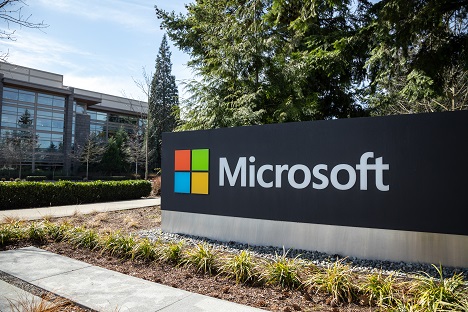Late last month, I showed you how eerily similar today’s stock market is to what it was like at the turn of the century.
Growth stocks are dangerously expensive, while value stocks have rarely been more attractively priced.
The market is presenting us with significant risk (growth stocks) and significant reward (value stocks).
In 2000, it paid big to avoid growth stocks and own value.
That meant taking a contrarian stance. At the time, everyone loved growth and believed that value investing was an outdated approach.
Now it’s time to start thinking like a contrarian and go against the grain again.
The investment herd has fallen in love with growth stocks and is willing to buy them at any price.
That is a mistake because valuation does matter.
In fact, a growth company can be a terrible investment if valuation is ignored…
A Great Company… and a Terrible Stock to Buy in 2000
From 2000 to 2014, Microsoft (Nasdaq: MSFT) churned out beautiful earnings growth year after year…
The kind of steady growth that investors dream of.
In 2000, Microsoft earned $0.89 per share. By 2014, its earnings had tripled to almost $2.70 per share.
This is what great growth businesses do. They grow and grow and grow.
What did those 14 years of growth do for investors who held Microsoft shares?
Less than nothing…
Despite seeing Microsoft’s earnings triple, an investor who bought shares on January 1, 2000, lost 20% by December 31, 2014.
For almost a decade and a half, Microsoft’s business thrived, but the stock went down.
Valuation matters – even for dominant, world-class businesses.
On January 1, 2000, Microsoft traded at 80 times earnings.
From that valuation, there was nothing that the underlying business could do to make buying shares a good investment.
A Great Company… and an Excellent Stock to Buy in 2015
By 2015, after 14 years of disappointment, investors had given up on Microsoft.
Why would you want to own a stock that never went up?
But its underlying business kept on performing.
From 2015 to 2020, Microsoft again churned out strong earnings growth year after year.
Its earnings have more than doubled again from $2.70 per share in 2014 to roughly $5.82 per share today.
But this time, these years of growth provided outstanding returns…
An investor who owned shares of Microsoft on January 1, 2015, has almost quadrupled their investment as of December 31, 2020.
From 2000 to the end of 2014, Microsoft’s business thrived, but the stock went nowhere.
Then, over the next five years, the business continued thriving but the stock nearly quadrupled.
What changed?
The answer is valuation.
After Microsoft’s 14 years of earnings growth and a stagnant share price, by January 1, 2015, its valuation dropped to just 17 times earnings.
That is an attractive valuation for an incredible growth company.
Many of the best publicly traded growth companies today are trading for very expensive valuations.
Some of those valuations have become downright ridiculous.
They are great companies, but it is the wrong price to pay.
This is not the time to buy shares of those companies. There are better opportunities elsewhere.
I look forward to bringing those opportunities to you here at Wealthy Retirement as we navigate 2021 together.
We’ll talk about the dangerously overvalued stocks and sectors to avoid…
And about the attractively valued stocks and sectors to focus on.
After all, opportunity is always knocking somewhere in the market.
Good investing,
Jody

 Click to see larger chart.
Click to see larger chart. Click to see larger chart.
Click to see larger chart. Click to see larger chart.
Click to see larger chart.